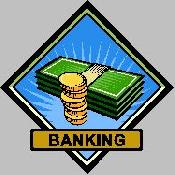
 |
|
| Financial Terms | |
| cash flow from operating activities, or cash flow from profit |
|
Information about financial, finance, business, accounting, payroll, inventory, investment, money, inventory control, stock trading, financial advisor, tax advisor, credit.
Main Page: business, financial, payroll, financial advisor, inventory control, inventory, credit, stock trading, |
Definition of cash flow from operating activities, or cash flow from profit
cash flow from operating activities, or cash flow from profitThis equals the cash inflow from sales during the period minus the cash
Related Terms:NPV (net present value of cash flows)Same as PV, but usually includes a subtraction for an initial cash outlay. PV (present value of cash flows)the value in today’s dollars of cash flows that occur in different time periods. After-tax profit marginThe ratio of net income to net sales. Annual fund operating expensesFor investment companies, the management fee and "other expenses," Before-tax profit marginThe ratio of net income before taxes to net sales. Book profitThe cumulative book income plus any gain or loss on disposition of the assets on termination of the SAT. CashThe value of assets that can be converted into cash immediately, as reported by a company. Usually  Cash budgetA forecasted summary of a firm's expected cash inflows and cash outflows as well as its Cash and carryPurchase of a security and simultaneous sale of a future, with the balance being financed Cash and equivalentsThe value of assets that can be converted into cash immediately, as reported by a Cash commodityThe actual physical commodity, as distinguished from a futures contract. Cash conversion cycleThe length of time between a firm's purchase of inventory and the receipt of cash Cash cowA company that pays out all earnings per share to stockholders as dividends. Or, a company or Cash cycleIn general, the time between cash disbursement and cash collection. In net working capital Cash deficiency agreementAn agreement to invest cash in a project to the extent required to cover any cash Cash deliveryThe provision of some futures contracts that requires not delivery of underlying assets but  Cash discountAn incentive offered to purchasers of a firm's product for payment within a specified time Cash dividendA dividend paid in cash to a company's shareholders. The amount is normally based on Cash equivalentA short-term security that is sufficiently liquid that it may be considered the financial Cash flowIn investments, it represents earnings before depreciation , amortization and non-cash charges. Cash flow after interest and taxesNet income plus depreciation. Cash flow coverage ratioThe number of times that financial obligations (for interest, principal payments, Cash flow from operationsA firm's net cash inflow resulting directly from its regular operations Cash flow matchingAlso called dedicating a portfolio, this is an alternative to multiperiod immunization in Cash flow per common sharecash flow from operations minus preferred stock dividends, divided by the Cash flow time-lineLine depicting the operating activities and cash flows for a firm over a particular period. Cash-flow break-even pointThe point below which the firm will need either to obtain additional financing  Cash management billVery short maturity bills that the Treasury occasionally sells because its cash Cash marketsAlso called spot markets, these are markets that involve the immediate delivery of a security Cash offerA public equity issue that is sold to all interested investors. Cash ratioThe proportion of a firm's assets held as cash. Cash settlement contractsFutures contracts, such as stock index futures, that settle for cash, not involving Cash transactionA transaction where exchange is immediate, as contrasted to a forward contract, which Cash-equivalent itemsTemporary investments of currently excess cash in short-term, high-quality Cash-surrender valueAn amount the insurance company will pay if the policyholder ends a whole life CashoutRefers to a situation where a firm runs out of cash and cannot readily sell marketable securities. Discounted cash flow (DCF)Future cash flows multiplied by discount factors to obtain present values. Discretionary cash flowcash flow that is available after the funding of all positive NPV capital investment Equivalent annual cash flowAnnuity with the same net present value as the company's proposed investment. Expected future cash flowsProjected future cash flows associated with an asset of decision. Flower bondGovernment bonds that are acceptable at par in payment of federal estate taxes when owned by Flow-through basisAn account for the investment credit to show all income statement benefits of the credit Flow-through methodThe practice of reporting to shareholders using straight-line depreciation and Free cash flowscash not required for operations or for reinvestment. Often defined as earnings before General cash offerA public offering made to investors at large. Gross profit marginGross profit divided by sales, which is equal to each sales dollar left over after paying Incremental cash flowsDifference between the firm's cash flows with and without a project. Ledger cashA firm's cash balance as reported in its financial statements. Also called book cash. Net cash balanceBeginning cash balance plus cash receipts minus cash disbursements. Net operating lossesLosses that a firm can take advantage of to reduce taxes. Net operating marginThe ratio of net operating income to net sales. Net profit marginNet income divided by sales; the amount of each sales dollar left over after all expenses Nominal cash flowA cash flow expressed in nominal terms if the actual dollars to be received or paid out are given. Noncash chargeA cost, such as depreciation, depletion, and amortization, that does not involve any cash outflow. Operating cash flowEarnings before depreciation minus taxes. It measures the cash generated from Operating cycleThe average time intervening between the acquisition of materials or services and the final Operating exposureDegree to which exchange rate changes, in combination with price changes, will alter a Operating profit marginThe ratio of operating margin to net sales. Operating leaseShort-term, cancelable lease. A type of lease in which the period of contract is less than the Operating leverageFixed operating costs, so-called because they accentuate variations in profits. Operating riskThe inherent or fundamental risk of a firm, without regard to financial risk. The risk that is Price-specie-flow mechanismAdjustment mechanism under the classical gold standard whereby Production-flow commitmentAn agreement by the loan purchaser to allow the monthly loan quota to be Profit marginIndicator of profitability. The ratio of earnings available to stockholders to net sales. Profitability indexThe present value of the future cash flows divided by the initial investment. Also called Profitability ratiosRatios that focus on the profitability of the firm. profit margins measure performance Real cash flowA cash flow is expressed in real terms if the current, or date 0, purchasing power of the cash Risk-adjusted profitabilityA probability used to determine a "sure" expected value (sometimes called a Scheduled cash flowsThe mortgage principal and interest payments due to be paid under the terms of the Short-run operating activitiesEvents and decisions concerning the short-term finance of a firm, such as Statement of cash flowsA financial statement showing a firm's cash receipts and cash payments during a Statement-of-cash-flows methodA method of cash budgeting that is organized along the lines of the statement of cash flows. Symmetric cash matchingAn extension of cash flow matching that allows for the short-term borrowing of Target cash balanceOptimal amount of cash for a firm to hold, considering the trade-off between the WallflowerStock that has fallen out of favor with investors; tends to have a low P/E (price to earnings ratio). Wanted for cashA statement displayed on market tickers indicating that a bidder will pay cash for same day CASH AND CASH EQUIVALENTSThe balance in a company’s checking account(s) plus short-term or temporary investments (sometimes called “marketable securities”), which are highly liquid. CASH-FLOW STATEMENTA statement that shows where a company’s cash came from and where it went for a period of time, such as a year. CASH FLOWS FROM FINANCING ACTIVITIESA section on the cash-flow statement that shows how much cash a company raised by selling stocks or bonds this year and how much was paid out for cash dividends and other finance-related obligations. CASH FLOWS FROM INVESTING ACTIVITIESA section on the cashflow statement that shows how much cash came in and went out because of various investing activities like purchasing machinery. CASH FLOWS FROM OPERATIONSA section on the cash-flow Stockholders’ equity statement that shows how much cash came into a company and how much went out during the normal course of business. GROSS PROFITThe profit a company makes before expenses and taxes are taken away. OPERATING EXPENSESThe total amount that was spent to run a company this year. PROFITWhat’s left over after you subtract the cost of goods sold and all your expenses from sales. Cash accountingA method of accounting in which profit is calculated as the difference between income Cash costThe amount of cash expended. Cash Flow statementA financial report that shows the movement in cash for a business during an accounting period. Cash value added (CVA)A method of investment appraisal that calculates the ratio of the net present value of an Controllable profitThe profit made by a division after deducting only those expenses that can be controlled by the Cost–volume–profit analysis (CVP)A method for understanding the relationship between revenue, cost and sales volume. Discounted cash flow (DCF)A method of investment appraisal that discounts future cash flows to present value using a discount rate, which is the risk-adjusted cost of capital. Gross profitThe difference between the price at which goods or services are sold and the cost of sales. Net profitSee operating profit. Operating profitThe profit made by the business for an accounting period, equal to gross profit less selling, finance, administration etc. expenses, but before deducting interest or taxation. ProfitThe difference between income and expenses. Profit and Loss accountA financial statement measuring the profit or loss of a business – income less expenses – for an accounting period. Profit before interest and taxes (PBIT)See EBIT. Profit centreA division or unit of an organization that is responsible for achieving profit targets. Profitability indexSee cash value added. Related to : financial, finance, business, accounting, payroll, inventory, investment, money, inventory control, stock trading, financial advisor, tax advisor, credit. |